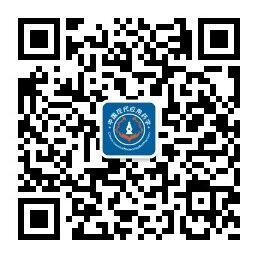| 引用本文: | 王寿峰,霍明官,刘艳,兰茜,王千椰,张畅.基于1H-NMR的金银花和山银花分类及道地产区金银花鉴别研究[J].中国现代应用药学,2025,42(8):140-147. |
| wang shoufeng,HUO Mingguan,LIU Yan,LAN Xi,WANG Qianye,ZHANG Chang.Classification of Lonicerae Japonica Flos and Lonicerae Flos Based on 1H-NMR and Identification of Lonicerae Japonica Flos whether from Authentic Producing Areas[J].Chin J Mod Appl Pharm(中国现代应用药学),2025,42(8):140-147. |
|
| 摘要: |
| 目的 建立一种识别道地产区金银花、非道地产区金银花及山银花的方案。方法 将核磁共振氢谱数据与一站式分析软件ChemPattern2020相结合对金银花进行模式识别,同时对金银花及山银花中的主要有效成分绿原酸进行定量。结果 建立了60批次金银花及山银花样品的指纹图谱,主成分分析(principal component analysis, PCA)结果显示前3个主成分的累计方差贡献率为96.97%,60批次样品聚为2组,金银花与山银花呈现一定的差异;正交偏最小二乘法(orthogonal partial least squares-discriminant analysis, OPLS-DA)的检验参数均接近于1,60批次样品聚为3组,确认了道地产区金银花、非道地产区金银花以及山银花的可识别性。进一步的,建立了基于支持向量机(Support Vector Machine, SVM)识别模型。核函数类型为径向基函数(Radial Basis Function, RBF),10折交叉验证,数据预处理采用均一化的条件下,建立的SVM模型识别率为100%;同时,基于1H-NMR测定了来自13个不同产地的金银花和山银花中绿原酸的含量。结论 1H-NMR结合模式识别能够有效区分道地产区金银花、非道地产区金银花及山银花。 |
| 关键词: 金银花 山银花 核磁共振氢谱 模式识别 |
| DOI: |
| 分类号:R284.1 |
| 基金项目:四川省科技厅应用基础研究 |
|
| Classification of Lonicerae Japonica Flos and Lonicerae Flos Based on 1H-NMR and Identification of Lonicerae Japonica Flos whether from Authentic Producing Areas |
|
wang shoufeng1,2, HUO Mingguan1,2, LIU Yan1,2, LAN Xi1,2, WANG Qianye1,2, ZHANG Chang1,2
|
|
1.Sichuan University of Science &2.Engineering
|
| Abstract: |
| OBJECTIVE To establish a method for the classification of Lonicerae Japonica Flos and Lonicerae Flos and identification of Lonicerae Japonica Flos whether from authentic producing areas. METHODS The data from nuclear magnetic resonance (NMR) was integrated with the one-stop analysis software ChemPattern2020 to pattern recognition of Lonicerae Japonicae Flos and the chlorogenic acid of the primary active component in Lonicerae Japonicae Flos and Lonicerae Flos was quantified. RESULTS The fingerprints of 60 batches of Lonicerae Japonicae Flos and Lonicerae Flos were established. The results of the principal component analysis (PCA) indicated that the cumulative variance contribution rate of the first three principal components was 96.97%. The 60 batches of samples were categorized into two distinct groups, revealing a notable difference between Lonicerae Japonicae Flos and Lonicerae Flos. Furthermore, the orthogonal partial least squares-discriminant analysis (OPLS-DA) demonstrated test parameters approaching 1, and 60 batches of samples were clustered into three groups. This analysis confirmed the identification of Lonicerae Japonica Flos and Lonicerae Flos and Lonicerae Japonica Flos whether from authentic producing areas. Additionally, a recognition model based on Support Vector Machine (SVM) was developed. The kernel function employed was Radial Basis Function (RBF), utilizing a 10-fold cross-validation approach, under conditions of uniform data preprocessing, this established SVM model achieved an impressive recognition rate of 100%. Meanwhile, chlorogenic acid levels in samples from thirteen different regions were determined using 1H-NMR spectroscopy. CONCLUSION 1H-NMR data combined with pattern recognition effectively distinguish Lonicerae Japonica Flos and Lonicerae Flos and Lonicerae Japonica Flos whether from authentic producing areas. |
| Key words: Lonicerae Japonicae Flos Lonicerae Flos 1H-NMR pattern recognition |
